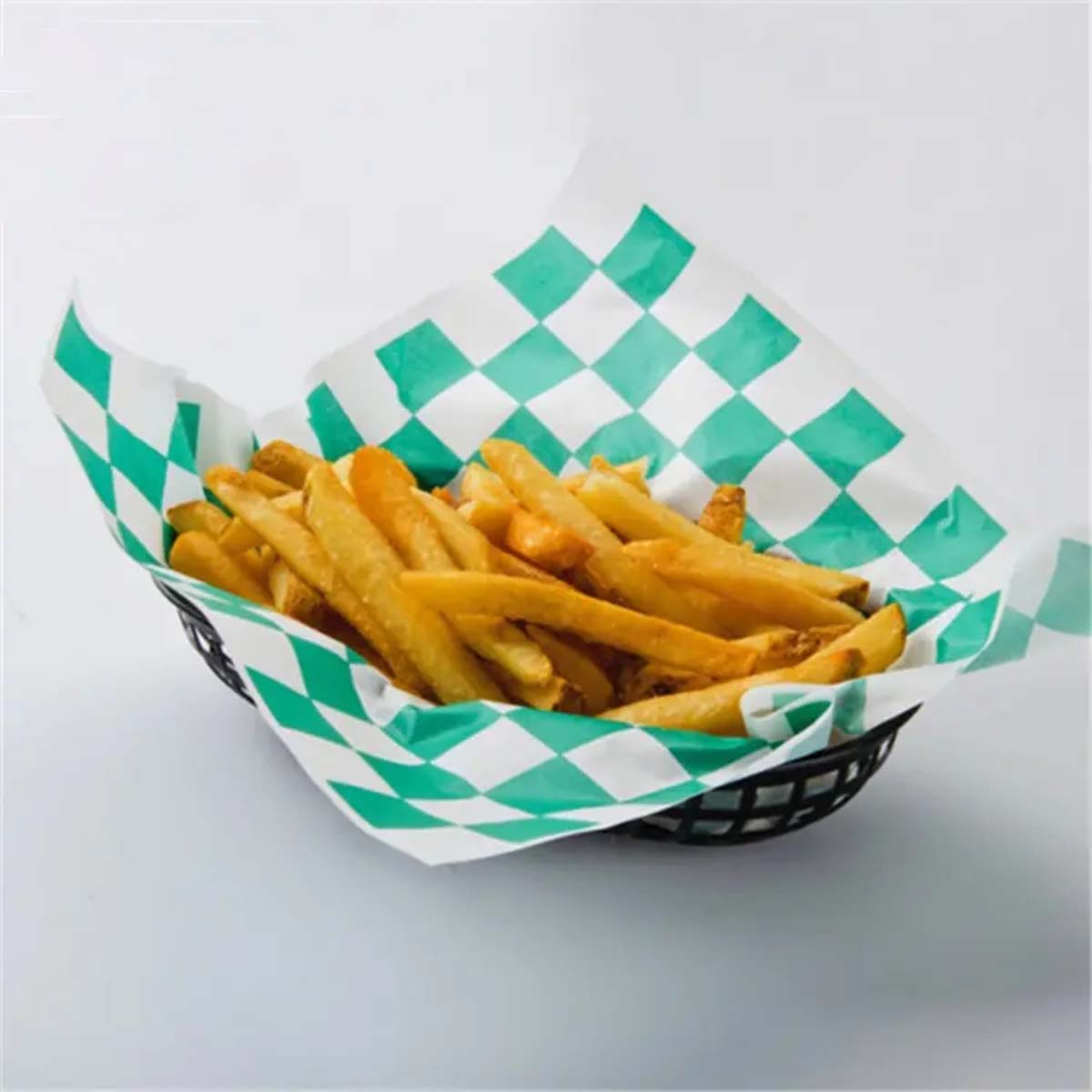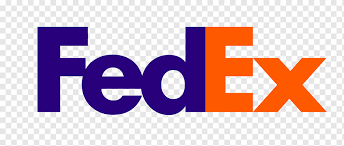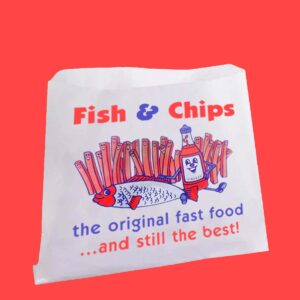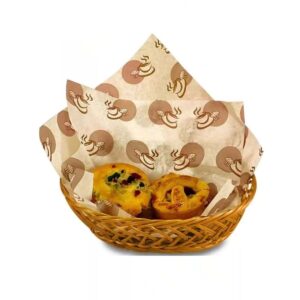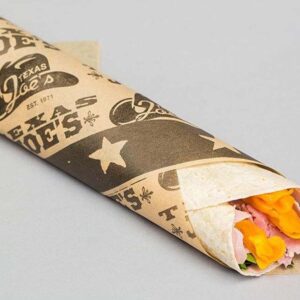Description
The Role of Custom Printed Fry Paper in Marketing
Why packaging surfaces matter in quick-serve marketing
The first moments after a customer receives food shape opinions about taste, hygiene, and brand care. Fry paper sits right under the product, so it becomes a quiet billboard that travels from counter to table and into photos shared with friends. In many stores, Custom Food Printed Papers are the most seen touchpoint per order, beating cup sleeves and box lids because fries and sides are handled first.
Using the right paper goes beyond protection. The surface itself can carry a strong message about freshness and care. When a brand invests in Custom Food Printed Papers, it signals attention to detail and builds a subtle but lasting bond with the customer.
Tiny touchpoints that shape brand recall
Logos repeated in a steady pattern keep the name present without shouting. When colors and shapes stay consistent, the brain files them faster, which helps recall during the next purchase. A clear mark near the top edge of the sheet often shows up in photos and short videos, giving free impressions with every share.
Faster service and tidier presentation
Sheets help line baskets, boats, and boxes. They catch crumbs and oil, so the serving surface looks clean even with high traffic. Staff can reset a tray by swapping a single sheet, which shortens wait time and keeps lines moving during peak hours.
| Feature | Details | Material Options | Finishing Choices | Add-ons & Features | Usage/Application |
|---|---|---|---|---|---|
| Logo Repeat | Passive recall through patterned branding | Printed on Kraft, SBS, or recycled board | Step-and-repeat printing (30–45° diagonal angles) | Repeating brand mark ensures visibility at multiple angles | Consistent logo exposure across sleeves, wraps, or small packaging |
| Accent Color | Acts as a strong visual anchor while controlling printing costs | Standard food-grade inks, eco inks | 1 strong accent color, ≤2–3 total inks recommended | Highlight specific design zones or brand symbols | Ideal for eye-catching designs while staying cost-efficient |
| CTA Line | Drives customer action with a short, clear phrase | Same substrate as main packaging | Bold placement, easy-to-read fonts | Positioned near corners for visibility | Encourages promotions, upsells, or customer engagement |
| QR Code | Trackable digital offer linked to campaigns | Printable on coated/uncoated surfaces | Crisp, high-resolution printing | ≥12 mm with clear margin; UTM-coded links | Enables tracking of promotions, loyalty programs, or special offers |
| Quiet Zone | Preserves food visibility, prevents heavy ink under heated areas | Lighter ink or unprinted sections | Soft gradient or reduced ink density | Central area kept light or blank | Best for pizza boxes, food wraps, or fry sleeves where visibility is key |
Custom Printed Fry Paper — design choices that sell
A small sheet demands discipline. Every element must earn space. Think in layers: base pattern for brand presence, one small callout for the offer, and room for the food to be the hero.
Artwork placement, contrast, and legibility
Use high contrast between ink and paper so marks remain visible under warm lights and steam. Keep logos simple; avoid fine outlines that blur when oil touches the sheet. A repeat pattern at a 30–45° angle often reads well from multiple camera angles. Leave quiet zones where fries land first to avoid heavy ink under hot spots.
Short messages, big outcomes
Treat the sheet like a headline bar. Rotate one timely message at a time—new flavor, app signup, or limited-time combo. Add a compact QR near a corner with a single, clear phrase. Short works better than dense copy in a busy setting.
Paper specs, inks, and compliance
Good print starts with the right substrate. The wrong sheet curls, bleeds, or tears. The right one stays flat and releases cleanly from salty or oily foods.
Grease resistance, basis weight, and print methods
Grease-proof or PE-coated papers resist oil and help maintain crisp graphics. Common basis weights range from 30–45 gsm for light sides to 50–60 gsm for loaded trays. Flexo handles large runs at speed. Offset suits finer detail on medium runs. Digital can cover short runs for local promos without plate charges.
Food-contact inks and safe layouts
Use water-based, food-contact inks that meet local rules. Keep dense ink areas away from the hottest food zones when possible. If a window of bare fiber is needed for direct contact, define it on the dieline so artwork never drifts into that zone.
| Feature | Details | Material Options | Finishing Choices | Add-ons & Features | Usage/Application |
|---|---|---|---|---|---|
| Paper Type | Grease-proof or PE-coated | Grease-proof paper PE-coated sheets |
Matte or semi-gloss surface options | Extra oil barrier layer Custom branding compatibility |
Ideal for burgers, fries, wraps, and bakery items |
| Basis Weight | 30–60 gsm | Lightweight (30–40 gsm) Heavy-duty (50–60 gsm) |
Smooth finish Durable fiber bonding |
Optional double-lining for oily foods | Food trays, side wraps, takeaway packs |
| Print Method | Flexo, Offset, or Digital printing | Compatible with all standard substrates | High-resolution printing Multi-color available |
Logo printing Custom artwork layouts |
Branding and promotional packaging |
| Ink System | Water-based, food-contact inks | Certified food-safe inks | Non-toxic, eco-safe finishing | PMS & CMYK options FDA-approved pigment use |
Safe for direct food contact Sustainable packaging |
| Sheet Size | Common size: 250 × 330 mm (custom sizes on request) | Standardized sheets for efficiency | Edge-trimmed or clean-cut finishes | Pre-cut sheets for uniform service | Streamlined for fast food & bakery operations |
| Curl Control | Humidity-conditioned packs Sealed storage recommended |
Anti-curl treated materials | Conditioning before final packing | Moisture-resistant wrapping | Prevents warping near heat lamps or warmers |
Cost control and ROI measurement
Sheets are a low unit-cost channel, but they touch nearly every order. That reach makes small design choices pay off when measured carefully. Cheese Paper Packaging plays a vital role here, as even small adjustments in sheet style or size can directly impact both cost and presentation.
Lowering cost without losing impact
Standardize one or two sheet sizes across the menu. Run larger quantities with seasonal art blocks to lower setup costs. If a heavy flood coat raises ink spend, switch to a smart repeat pattern that uses less ink while keeping presence strong.
Tracking outcomes that matter
Give each campaign sheet a unique QR, short code, or UTM. Track scans, offer redemptions, and changes in basket mix. If a fry-paper ad mentions an app incentive, monitor installs from that source and the 7-day order rate to gauge lift.
| Description | Details | Material Options | Finishing Choices | Add-ons and Features | Usage and Application |
|---|---|---|---|---|---|
| Scan-through rate | Calculated as the number of QR code scans divided by the total trays served | Not applicable | Not applicable | Tracking enabled through QR codes placed on packaging | Typically ranges between zero point eight percent and two point five percent for in-store campaigns |
| Offer redemption | Measured through point-of-sale code usage | Not applicable | Not applicable | Coupon codes and point-of-sale system integration | Target benchmark is equal to or greater than twenty percent of all scans |
| App installs | Captured using mobile measurement partners and UTM attribution | Not applicable | Not applicable | Retargeting links, install tracking mechanisms | Key performance indicators include seven-day retention and the occurrence of a second order |
| Basket mix lift | Evaluated by comparing point-of-sale basket data against a control group | Not applicable | Not applicable | Promotional tags and item-level analytics at the point of sale | Desired impact is an increase between two percent and five percent on promoted items |
| Waste impact | Determined by measuring the number of sheets used per one hundred orders | Not applicable | Not applicable | Packaging material usage reports and monitoring systems | Acceptable variance is maintained within plus or minus five percent across all stores |
Operations, sustainability, and scale
What works on a designer’s screen must also work on a prep line. Sheets should pull cleanly from the stack, sit flat, and bin neatly after use.
Flow at the station
Bundle sheets in easy-count stacks so staff can grab set numbers quickly. Train teams to place the logo upright relative to the customer to improve visibility at the table. Keep a laminated placement guide near the fry station for new staff.
Materials and recycling cues customers notice
Recycled content and fiber sourcing marks belong near a corner where they won’t clash with photos. Simple prompts like “Dispose with paper where accepted” help customers act correctly. A tidy, low-gloss sheet reads as clean and well kept, which supports quality cues for the food itself.
Brand consistency across locations
Chains and franchises need artwork and specs that look the same from store to store, even when printers differ.
Color targets and printer handoff
Provide Pantone targets and CMYK builds, plus tolerance ranges for heat and humidity. Share a print proof with oil-exposure notes so vendors understand where graphics matter most. Request a signed drawdown before the first run.
Template discipline for local offers
Build one master template with switchable fields. Allow only the message line, QR target, and small icon swap to change. This keeps the look steady while letting local teams run timely campaigns.
Launch plan for a new fry-paper campaign
Moving from idea to tray takes clear specs and a short, focused pilot.
What to specify on one page
List paper type, basis weight, print method, sheet size, and stack count. Add artwork placement rules, safe zones, and QR size. Include service notes: which menu items use the sheet, station training points, and storage guidance.
Pilot tests and feedback loops
Run a two-week test at a few stores. Track scan rates, prep speed, and any curl or bleed. Ask staff about handling and waste. Adjust contrast, spacing, or coating if you see smudging or glare under warmers. When the metrics look good, move to a wider release.
Social reach and earned media moments
Fry paper often photobombs social posts. Lean into that with details that read well on camera.
Camera-ready details
Avoid heavy gloss that reflects heat lamps. Use simple shapes, bold marks, and one strong accent color. Place the logo or campaign icon where it will peek from under a pile of fries without blocking the food.
Encouraging shareable moments
Pair the sheet with a short tag line or hashtag in small type near a corner. Staff can rotate trays so the mark faces the guest. Even small exposure in a casual photo can drive impressions at scale during busy hours.
Key takeaways for brand teams
A sheet under fries can do more than absorb oil. It can carry the logo, point to an offer, and cue hygiene and care in a fast setting. Treat it like a media slot with strict layout rules, measurable goals, and an operations-first mindset.
Rapid checklist for your next brief
Define the message, pick a contrast-strong pattern, set paper and ink specs, add a trackable code, align with station flow, and schedule a short pilot before a full run. With that sequence, fry paper turns into a steady, repeatable channel that builds recognition one tray at a time.




